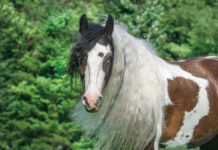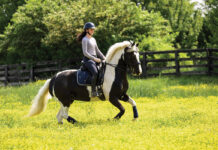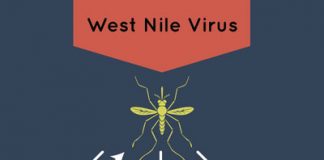If you’re around a lot of horse owners, kissing spine may seem like the new disease du jour. It’s hard to find a barn that doesn’t have at least one owner who has had the vet utter the words as a possible diagnosis for a wide variety of clinical signs.
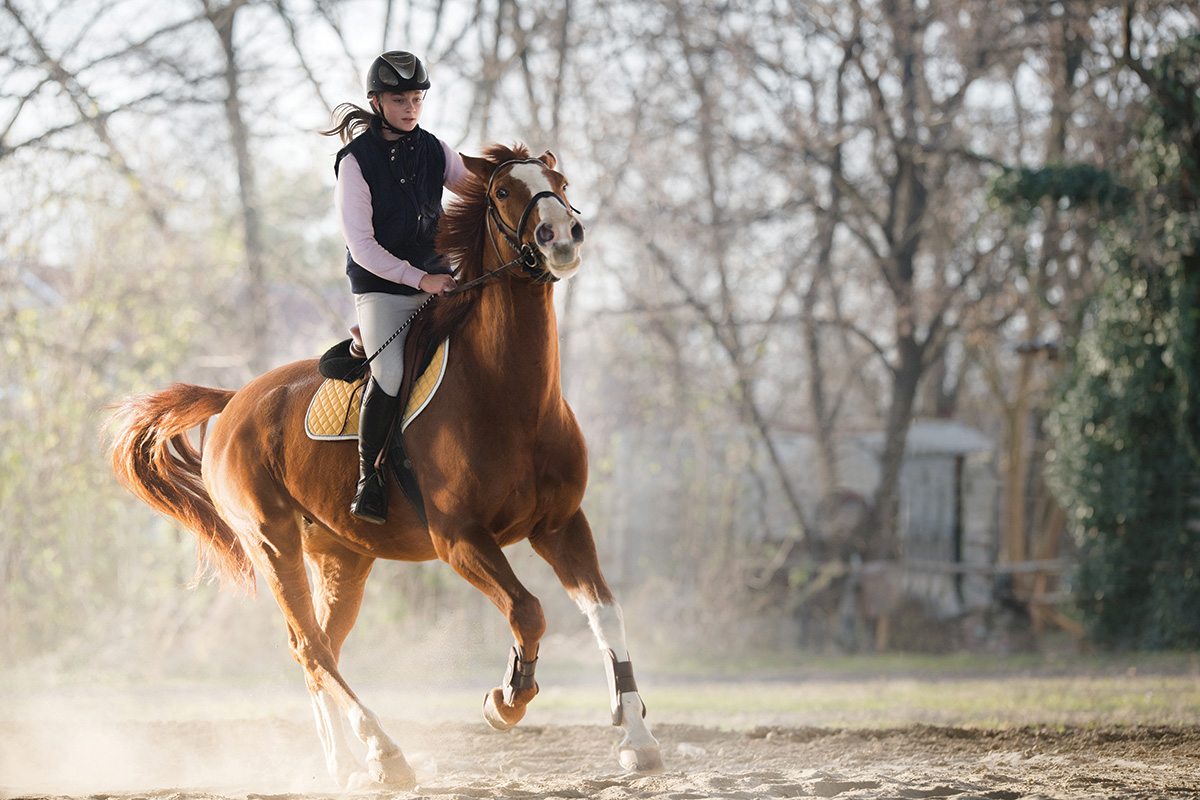
Also Read: Expert’s Advice on Kissing Spine
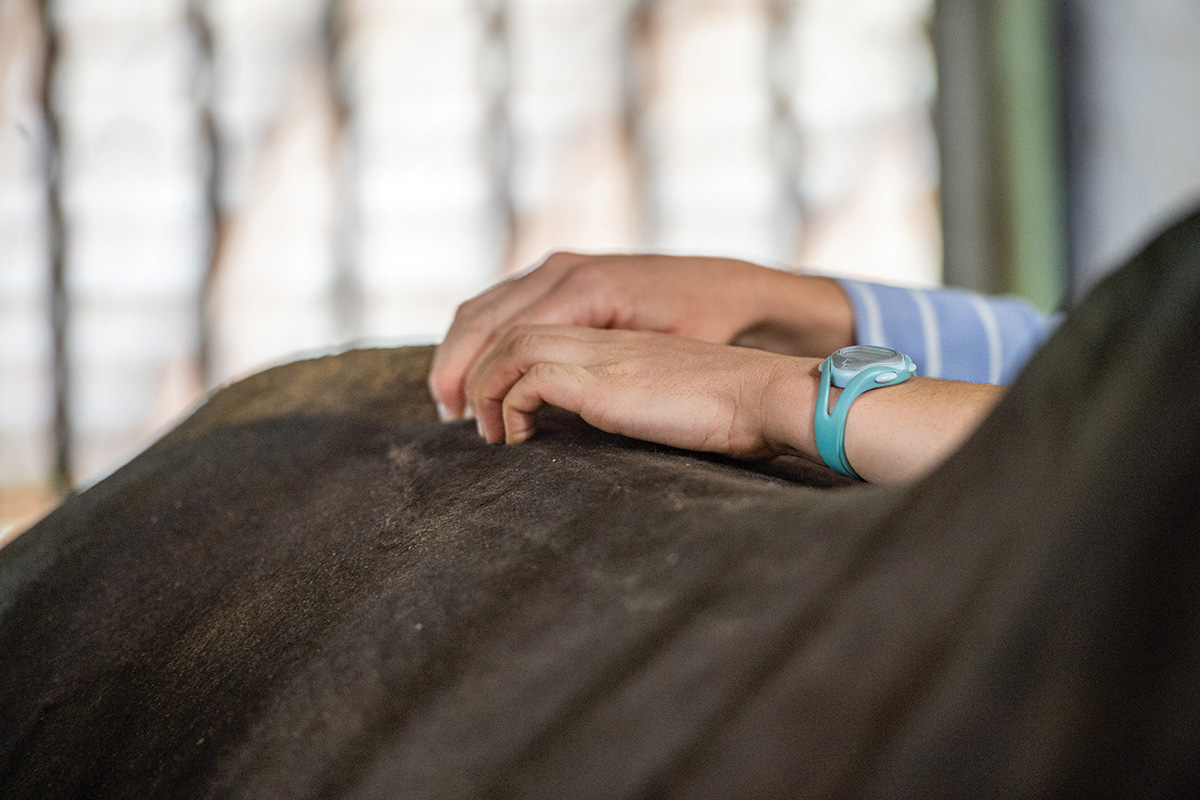
Less obvious signs can be a horse that is stiff under saddle or one that is consistently hollow or tosses his head. He may be reluctant to go forward or have trouble picking up the correct lead or maintaining a true three-beat canter under saddle. While many of these issues can be caused by other problems, kissing spine shouldn’t be ruled out without a veterinary investigation.
A Sweet Name for a Sour Problem
True to its name, kissing spine occurs when the bony projections (called dorsal spinous processes, or DSPs) on a horse’s vertebrae rub or impinge on each other, causing pain and changes in the bones and ligaments that attach to them, explains Liberty Getman, DVM, an associate surgeon at Tennessee Equine Hospital. Getman graduated from the University of Florida before completing a residency at the University of Pennsylvania; she is specifically interested in lameness and orthopedic surgery.
Kissing spine is suspected when a horse shows significant, consistent pain when light pressure is placed on the lumbar and lower thoracic spine, Getman explains. The condition is often most painful when the horse is wearing a saddle; the afflicted horse is often sound but displays behavioral problems when ridden. The condition can greatly affect a horse’s performance.
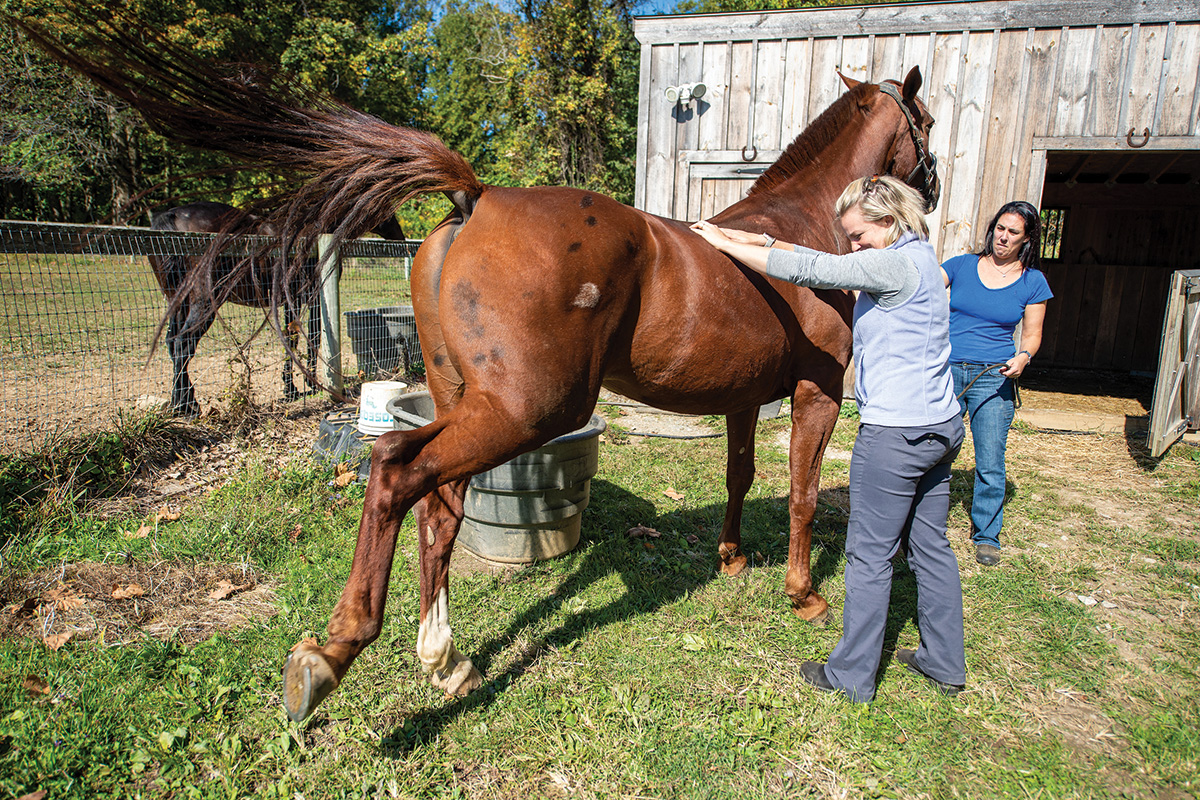
Some cases are so severe that the DSPs can overlap by as much as 50 percent, says Lauren Luedke, DVM, Dipl. ACVS-LA, a Colorado State University graduate who completed her residency at Cornell University before becoming a surgeon at Manor Equine Hospital in Maryland.
Interestingly, horses diagnosed with kissing spine exhibit varying degrees of pain—and the degree of abnormality does not always dictate the level of pain, says Luedke.
“For example, there are some horses with severe changes and minimal back pain and some horses with mild radiographic changes with marked back pain,” she explains.
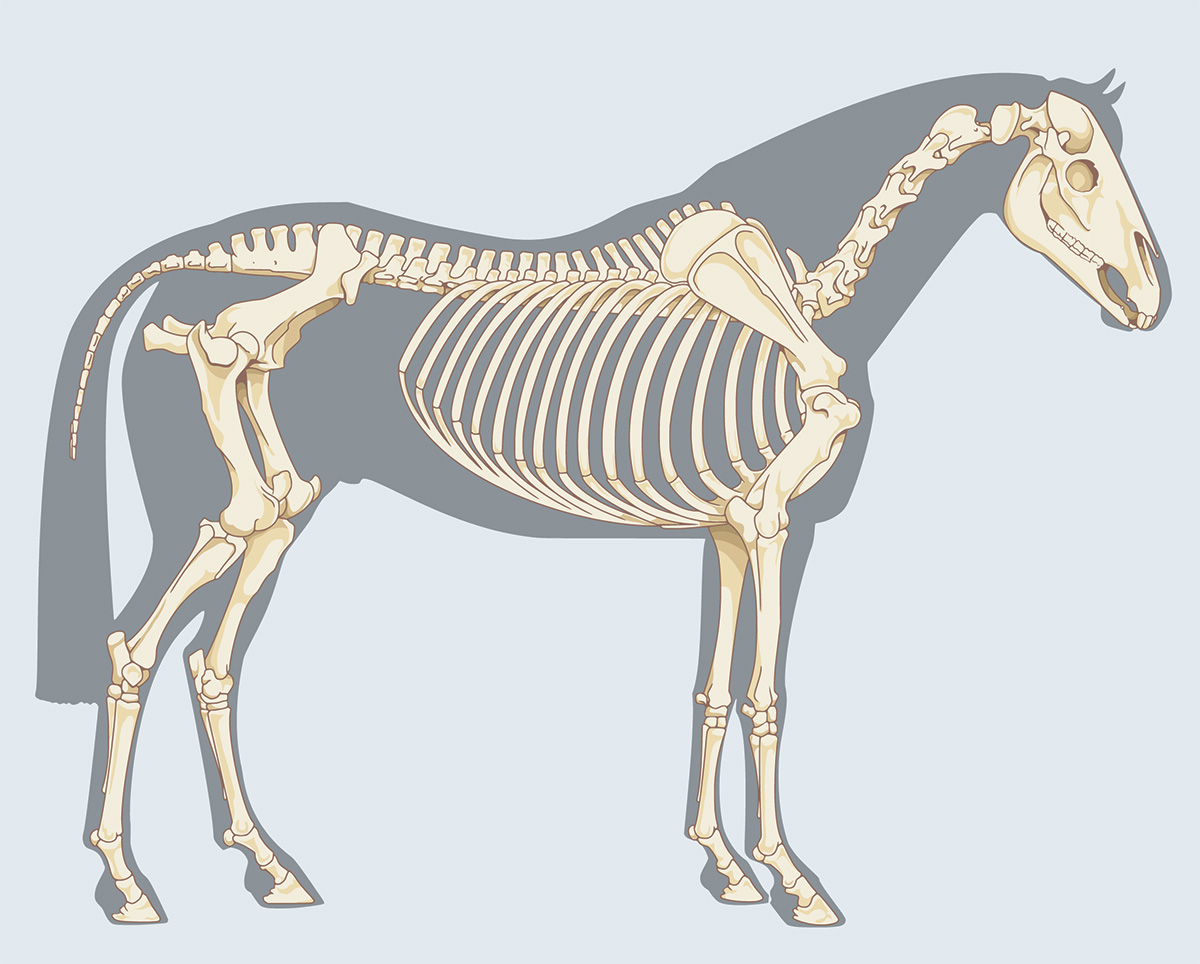
Kissing spine can be diagnosed using a combination of methods, but each will begin with a clinical exam. Based on exam results, radiographs can be used to confirm findings as evident by impingement and bone remodeling of one or more of the dorsal spinous processes, says Luedke. In more complex cases, nuclear scintigraphy (bone scans) can be useful in detecting active bone remodeling, indicating that DSP impingement is a primary problem.
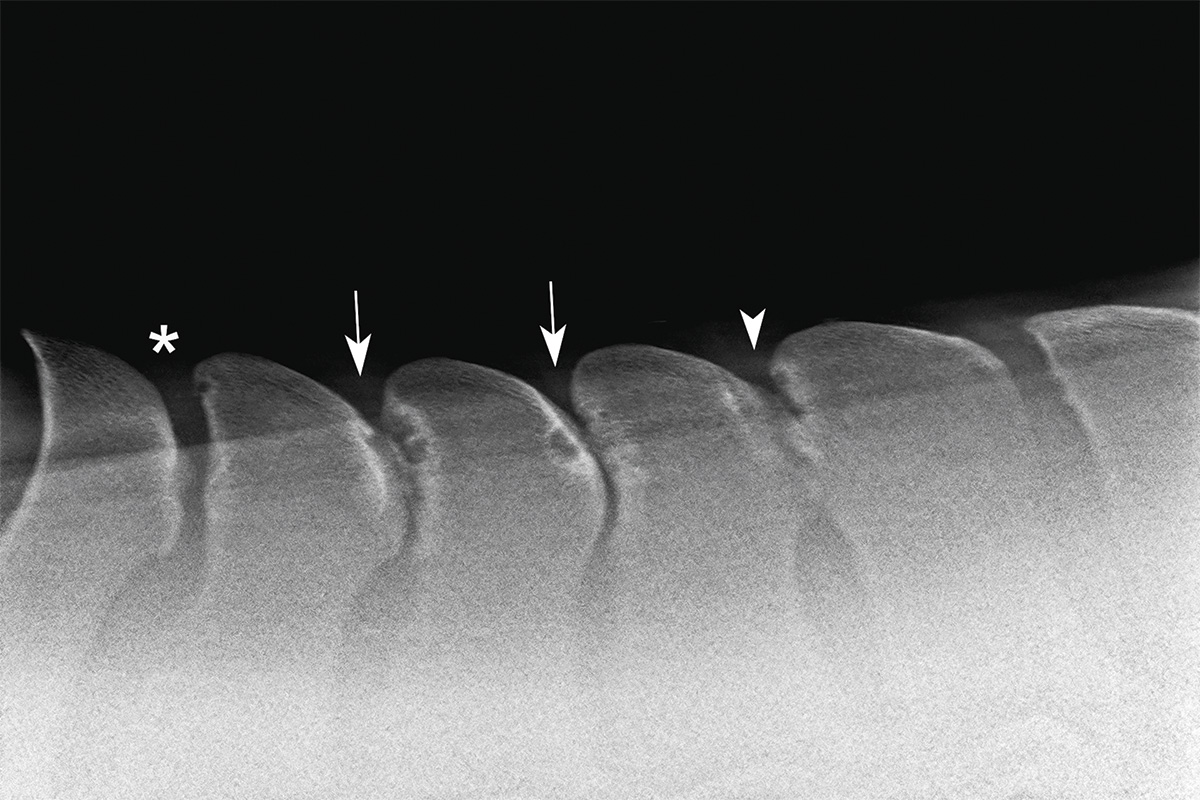
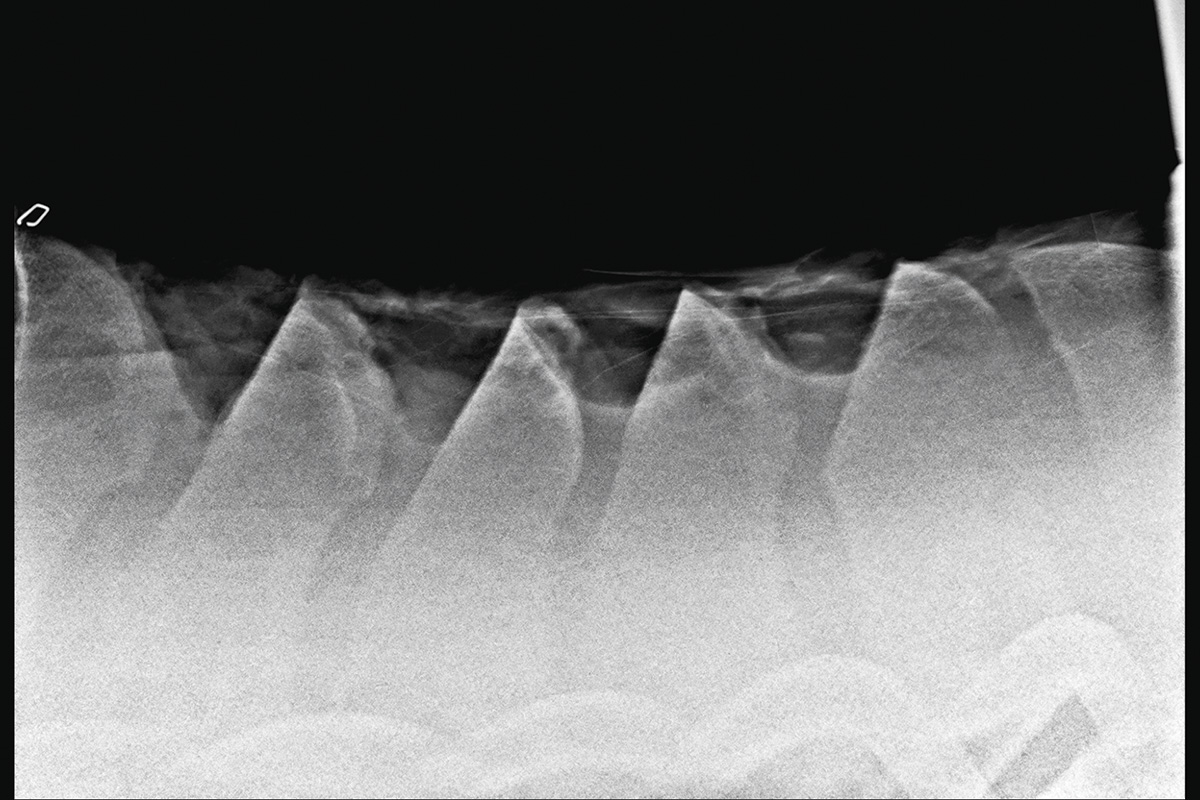
Blocking the sites of impingement with carbocaine (a numbing agent) may be useful. However, because some horses can have radiographic changes (visible on X-ray) without clinical signs, Luedke stresses that it’s important to analyze findings collectively to arrive at a diagnosis.
Kissing Spine Prognosis and Treatments
The prognosis for horses with kissing spine is fair to good with appropriate management, according to Luedke.
Getman agrees.
“It’s important to remember that horses with kissing spine have an excellent prognosis for life, and that the prognosis can be good-to-excellent for athletic performance,” she says. “The severity of the disease and how many sites are impinging influence prognosis.”
Treatment of the condition can range from back injections to surgical removal of the bone that is impinging and causing pain. Luedke says that treatment often begins with the administration of anti-inflammatories and muscle relaxers, and a steroid injection between the impinged DSPs. Injections are not a one-and-done solution, however.
“The hope is that the injections last for six months to a year, but in more severe cases, [the injections] may only last a couple months,” says Luedke.
Getman also often recommends chiropractic adjustment, acupuncture and mesotherapy to horses in her care that are affected by kissing spine. Mesotherapy involves injecting small amounts of compounds into the middle layer of skin using very fine needles; it’s often used for pain management.
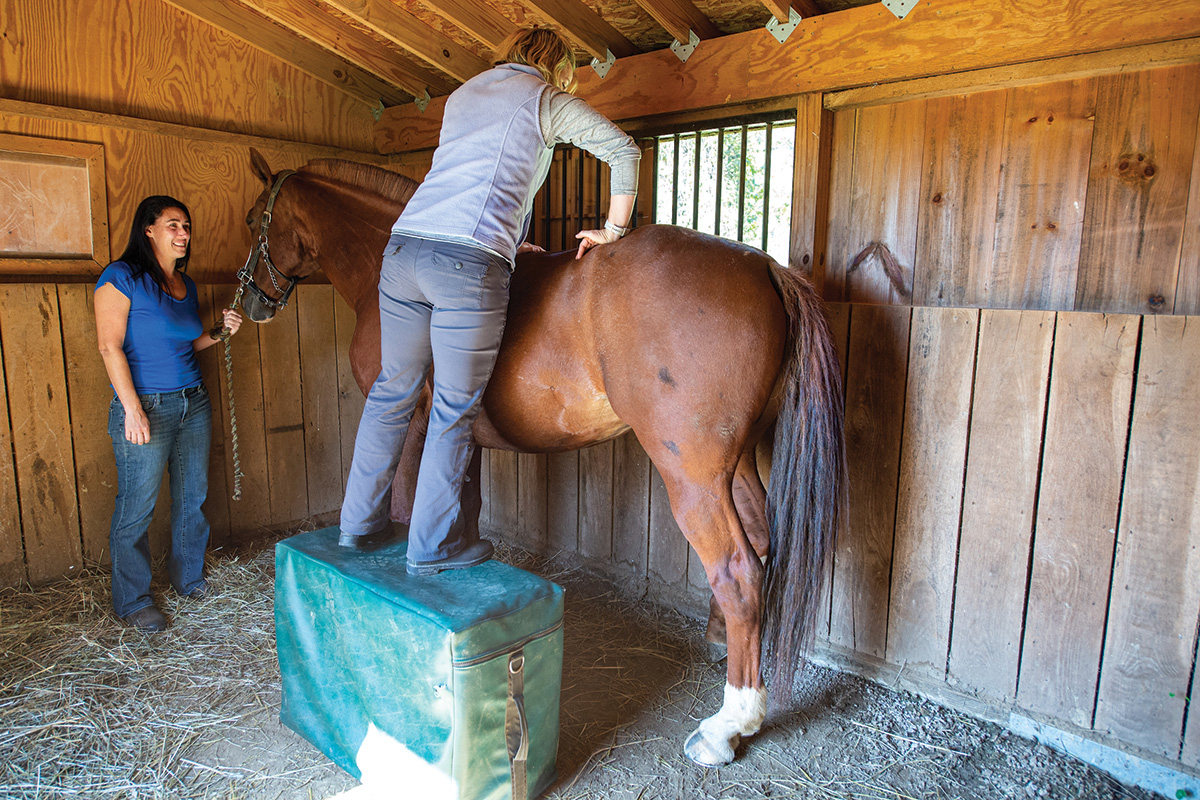
If medical therapies are unsuccessful, surgery is an option. The more conservative surgery is known as an interspinous ligament desmotomy, or “keyhole” surgery. This minimally invasive procedure cuts the ligament that connects the two affected spinous processes to each other, explains Luedke, and can be done in multiple areas. This surgery allows more room between the DSPs and likely transects the nerve to eliminate pain.
A more invasive surgical option is a cranial wedge ostectomy, which removes the impinged bone and requires more extensive incisions and rehabilitation. The type of surgery pursued is often dictated by the severity of disease: in cases where the DSPs are overlapping, cranial wedge ostectomy is the preferred surgery.
Though horses affected by kissing spine experience the most pain when they are under saddle, most can have athletic careers if their pain can be managed, says Luedke.
“Some horses with explosive behavior may be too dangerous to ride,” even after their kissing spine issue is resolved, she notes. She says that the earlier pain a horse experiences from kissing spine is managed, the less likely he is to learn the explosive behavior associated with the back pain.
Luedke concurs.
“My experience so far is that horses with DSP impingement requiring surgery have done very well post-operatively,” she says.
She adds that there is one piece of the kissing spine puzzle that has not yet been tested.
“We don’t know yet know what happens to these horses 10 years from now,” says Luedke. “Is there any recurrence of disease, or can it occur at other locations? Or do the horses continue to do well because we have taken away the pain component, allowing them to use their back properly and maintain [muscle] strength?”
A Note on Rehabilitation
Kirsten Johnson, owner of Kentucky Equine Sports Medicine and Rehabilitation Center (KESMARC) in Versailles, Ky, which offers multiple treatments for a variety of conditions from which a horse may be recuperating.
These include a hyperbaric chamber, a pool, an underwater treadmill, and a cold saltwater spa, among others. Each of these has its place in the rehabilitation of various injuries, ailments, and surgeries, but Johnson has had extremely good results in horses suffering from kissing spine using a combination of treatments.
“I’ve had success with horses with very poor prognoses with doing a good [chiropractic] adjustment, saddle fit and back-strengthening exercises,” she says. “I’ve had horses that were going to be euthanized go back to lead quality, productive lives.”
One often overlooked facet of kissing spine pain management is saddle fit, according to Johnson. Also, compensatory pain is a concern.
“Once the horse starts hurting, other things go wrong,” she says. “Rehabilitation is focused on not only retraining the body, but also on hopefully making improvements there in terms of strengthening and lifting the back. You also have to focus on retraining the brain—and doing it safely,” she says of horses that may have developed dangerous habits resulting from perpetual pain.
The water does a very good job of letting horses reap the benefits of it use while forgetting everything that hurts, she notes. Whether the horse goes on the underwater treadmill or swims is dependent on the horse, his age and his discipline, she says. For horses that come to KESMARC for rehab for kissing spine, Johnson says she often sees marked results in 90 days.
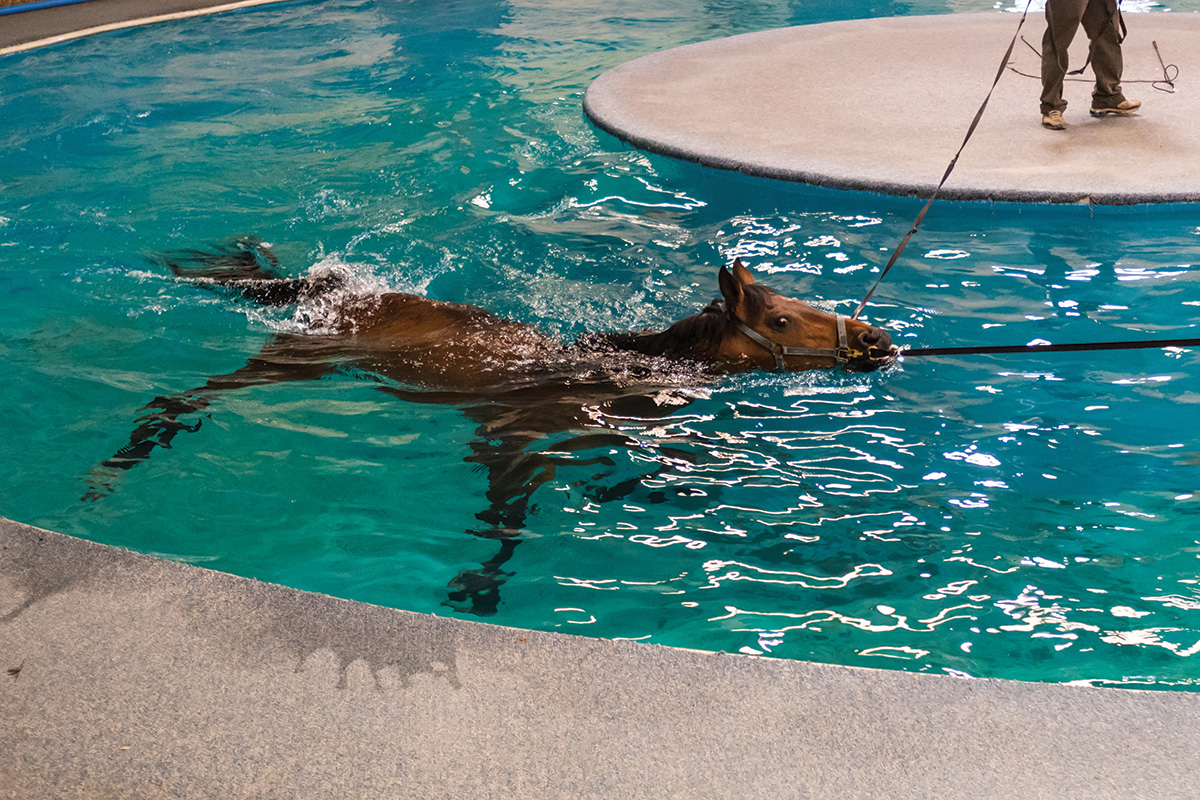
Though kissing spine may seem like a death knell for a horse’s athletic career, it often is not. A veterinarian focused on a correct diagnosis and treatment for the individual horse is key, as is a well-defined, strategic plan to bring the horse back into work.
This article about kissing spine appeared in the April 2022 issue of Horse Illustrated magazine. Click here to subscribe!


